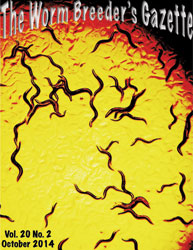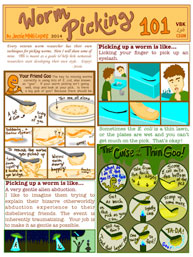While the anatomy of the adult hermaphrodite has been carefully dissected, there are numerous gaps in our knowledge of dauer anatomy. Dauers are known to be relatively resistant to environmental insults compared with non-dauer stages. This is attributed to both changes in cuticle structure and occlusion of the stoma during dauer (Cassada and Russell, 1975). The analogous infective stages of certain parasitic nematode species form an anal plug, potentially sealing the alimentary canal at the posterior end (Vincent et al., 1979). It has been suggested that C. elegans dauers may produce a similar structure (Wolkow and Hall, 2011).
Here we present evidence demonstrating that that the anus is not occluded during the dauer stage of C. elegans. During the course of microscopic examination with DIC Nomarski optics, we regularly observe the production of bubbles emanating from the anuses of wild-type C. elegans dauers (Movie 1). Bubbles are frequently seen outside the anus immediately following examination of a newly mounted dauer. We typically mount dauers on 2-5% agarose in M9 buffer amended with 0.1 M levamisole. To test whether expulsion was a result of levamisole exposure, we also mounted dauers on 10% agarose with microsphere beads with no anesthetic (See Fang-Yen et al., WBG 18:1) and found that 25/39 dauers produced bubbles.
This finding poses several questions:
1) Does this action serve a homeostatic function similar to that seen with the pumping of the excretory pore during dauer (Nelson and Riddle, 1984)? Our preliminary data suggests no difference in expulsion following exposure to a series of M9 dilutions.
2) What is the chemical nature of the bubbles? Our tongue-in-cheek title suggests a gaseous phase. Indeed, the bubbles are less dense than the surrounding media. Dauers mounted ventral-side down will produce bubbles that rise to the dorsal surface. However, this difference in density and the relative stability of the bubbles could also suggest a lipid based excretion.
3) Are there neuronal changes in dauers which control this expulsion? While changes to the anterior nervous system are known to occur in dauer (Albert and Riddle, 1983), there are likely additional changes which mediate other dauer-specific processes.
Figures
References
Albert PS, and Riddle DL. (1983). Developmental alterations in sensory neuroanatomy of the Caenorhabditis elegans dauer larva. J. Comp. Neurol. 219, 461-481. 
Cassada RC, and Russell RL. (1975). The dauerlarva, a post-embryonic developmental variant of the nematode Caenorhabditis elegans. Dev. Biol. 46, 326-342. 
Nelson FK, and Riddle DL. (1984). Functional study of the Caenorhabditis elegans secretory-excretory system using laser microsurgery. J. Exp. Zool. 231, 45-56. 
Vincent AL, Frommes SP, and Ash LR. (1979). Ultrastructure of the rectum of infective-stage Wuchereria bancrofti (Nematoda: Filarioidea). J. Parasitol. 65, 246-252. 
Wolkow C, and Hall DH. (2011). The Dauer Cuticle. In WormAtlas. 




